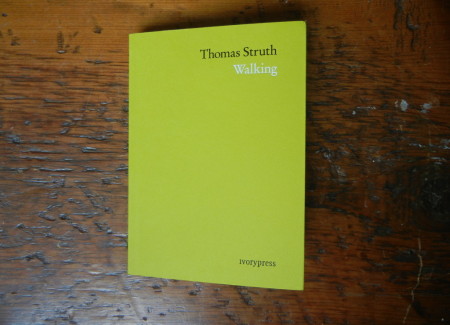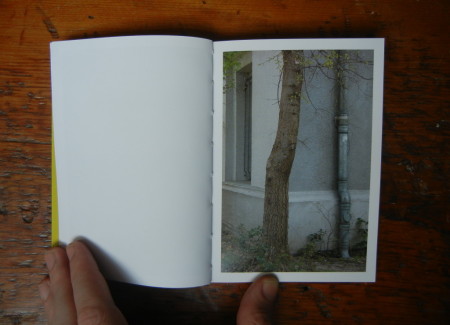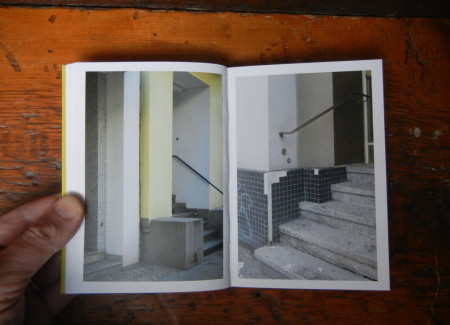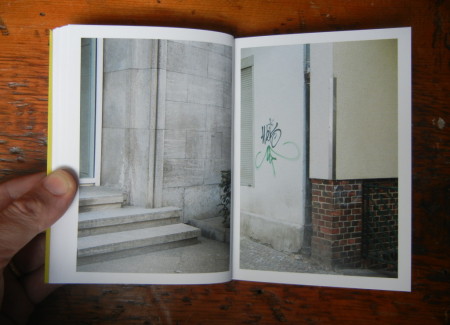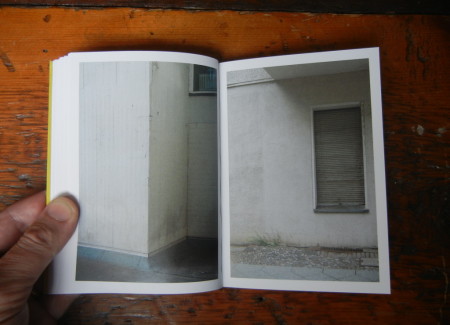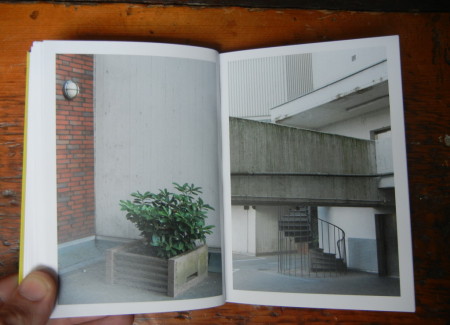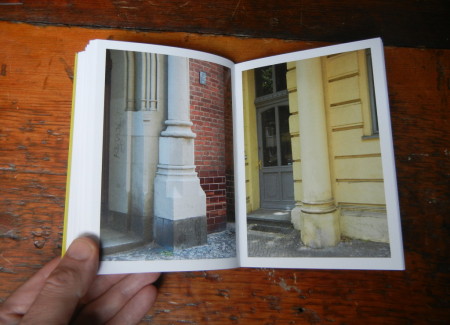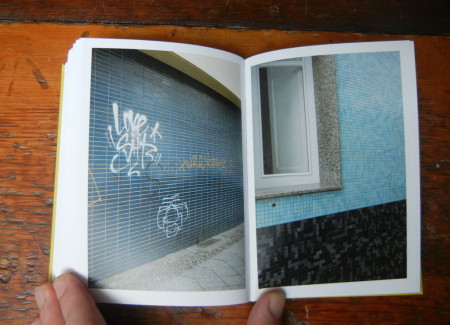JTF (just the facts): Published in 2013 by Ivorypress (here). Softbound, 196 pages, with 132 color photographs. Includes a short essay by the artist. (Spread shots below.)
Comments/Context: Having recently been enveloped by the wall devouring, monumentally scaled prints (some nearly 8 feet tall by 10 feet wide) in Thomas Struth’s latest gallery show (reviewed here), there is something entirely refreshing about experiencing a selection of Struth’s photographs in an intimate artist’s book that nestles comfortably in the palm of one hand. Walking is a departure for Struth, a momentary move away from imposing bigness, technological marvel, and controlled grandeur and back to more humble photographic discoveries made wandering on foot. The book functions like a palate cleanser, allowing both the artist and viewer to relax a little and share the simpler pleasures of smaller visual ideas.
Struth has been making of pictures of architecture since his graduate school days, and so the images in Walking fit into a larger framework (and career) of thinking about buildings and urban environments. Back in the 1970s, he shot straight down city streets, bisecting deserted early morning blocks into receding perspective lines in crisp black and white. He then took on various styles of hulking apartment blocks, where long angles and strong horizontals dominated the compositions. By the early 1990s, he became interested in layers of city skyscrapers and more complex urban settings, ultimately leading to wider views of streets from around the globe that combine architecture and humanity into formal tableaux.
The photographs in Walking bypass this long term trend toward increasing scope and breadth and pull back down to the immediacy of the streets. The pictures capture the geometries and surfaces of everyday architecture with a casual precision; windows, stairs, and doorways are squared off, but aren’t necessarily boiled down with meticulous, perfectionist rigor – Struth’s angles are looser and friendlier, as if found on an ambling stroll and collected like mushrooms in the forest. Textures in tile and concrete, lines of corrugated tin and striated brick, quick dashes of graffiti, they’re all captured with the eye of a curious note taking observer who is seeing the details of the city with fresh eyes once again. If we’re honest, these pictures aren’t much different than those that are routinely made by many other wandering architecture enthusiasts, whose tender attention to drainpipes and stone blocks keeps them poking down alleys in search of hidden elegance. But this universal familiarity doesn’t diminish the appeal of Struth’s first person urban experience; we’re happy to tag along and follow his eyes across windows and around corners.
For an artist with the stature of Thomas Struth, this book is a delightfully unpretentious statement. It says that regardless of all the fame and recognition he has so deservedly earned, he remains fascinated by that same photographic seeing that grabs each and every one of us, and by those unassuming walks through forgotten neighborhoods that yield moments of surprising alignment and grace. This small photobook is like an easy going companion, full of unassuming sketches, memory joggers, and found visual scraps, evidence of the quiet cadence of traveling through a nameless city on foot, attentively looking around.
Collector’s POV: Thomas Struth is represented in New York by Marian Goodman Gallery (here). Struth’s photographs are consistently available in the secondary markets, with prices starting as low as $5000 and rising all the way past $1000000, with large, well known pieces routinely fetching six figures.
